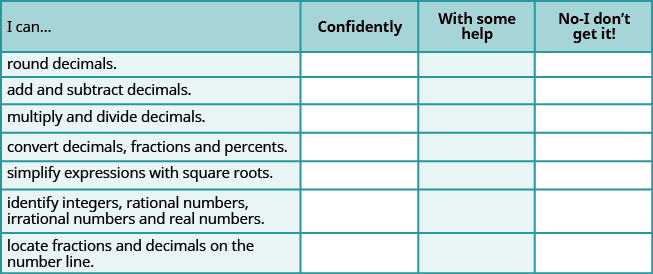1.5E: Exercises
- Page ID
- 30291
\( \newcommand{\vecs}[1]{\overset { \scriptstyle \rightharpoonup} {\mathbf{#1}} } \)
\( \newcommand{\vecd}[1]{\overset{-\!-\!\rightharpoonup}{\vphantom{a}\smash {#1}}} \)
\( \newcommand{\dsum}{\displaystyle\sum\limits} \)
\( \newcommand{\dint}{\displaystyle\int\limits} \)
\( \newcommand{\dlim}{\displaystyle\lim\limits} \)
\( \newcommand{\id}{\mathrm{id}}\) \( \newcommand{\Span}{\mathrm{span}}\)
( \newcommand{\kernel}{\mathrm{null}\,}\) \( \newcommand{\range}{\mathrm{range}\,}\)
\( \newcommand{\RealPart}{\mathrm{Re}}\) \( \newcommand{\ImaginaryPart}{\mathrm{Im}}\)
\( \newcommand{\Argument}{\mathrm{Arg}}\) \( \newcommand{\norm}[1]{\| #1 \|}\)
\( \newcommand{\inner}[2]{\langle #1, #2 \rangle}\)
\( \newcommand{\Span}{\mathrm{span}}\)
\( \newcommand{\id}{\mathrm{id}}\)
\( \newcommand{\Span}{\mathrm{span}}\)
\( \newcommand{\kernel}{\mathrm{null}\,}\)
\( \newcommand{\range}{\mathrm{range}\,}\)
\( \newcommand{\RealPart}{\mathrm{Re}}\)
\( \newcommand{\ImaginaryPart}{\mathrm{Im}}\)
\( \newcommand{\Argument}{\mathrm{Arg}}\)
\( \newcommand{\norm}[1]{\| #1 \|}\)
\( \newcommand{\inner}[2]{\langle #1, #2 \rangle}\)
\( \newcommand{\Span}{\mathrm{span}}\) \( \newcommand{\AA}{\unicode[.8,0]{x212B}}\)
\( \newcommand{\vectorA}[1]{\vec{#1}} % arrow\)
\( \newcommand{\vectorAt}[1]{\vec{\text{#1}}} % arrow\)
\( \newcommand{\vectorB}[1]{\overset { \scriptstyle \rightharpoonup} {\mathbf{#1}} } \)
\( \newcommand{\vectorC}[1]{\textbf{#1}} \)
\( \newcommand{\vectorD}[1]{\overrightarrow{#1}} \)
\( \newcommand{\vectorDt}[1]{\overrightarrow{\text{#1}}} \)
\( \newcommand{\vectE}[1]{\overset{-\!-\!\rightharpoonup}{\vphantom{a}\smash{\mathbf {#1}}}} \)
\( \newcommand{\vecs}[1]{\overset { \scriptstyle \rightharpoonup} {\mathbf{#1}} } \)
\( \newcommand{\vecd}[1]{\overset{-\!-\!\rightharpoonup}{\vphantom{a}\smash {#1}}} \)
\(\newcommand{\avec}{\mathbf a}\) \(\newcommand{\bvec}{\mathbf b}\) \(\newcommand{\cvec}{\mathbf c}\) \(\newcommand{\dvec}{\mathbf d}\) \(\newcommand{\dtil}{\widetilde{\mathbf d}}\) \(\newcommand{\evec}{\mathbf e}\) \(\newcommand{\fvec}{\mathbf f}\) \(\newcommand{\nvec}{\mathbf n}\) \(\newcommand{\pvec}{\mathbf p}\) \(\newcommand{\qvec}{\mathbf q}\) \(\newcommand{\svec}{\mathbf s}\) \(\newcommand{\tvec}{\mathbf t}\) \(\newcommand{\uvec}{\mathbf u}\) \(\newcommand{\vvec}{\mathbf v}\) \(\newcommand{\wvec}{\mathbf w}\) \(\newcommand{\xvec}{\mathbf x}\) \(\newcommand{\yvec}{\mathbf y}\) \(\newcommand{\zvec}{\mathbf z}\) \(\newcommand{\rvec}{\mathbf r}\) \(\newcommand{\mvec}{\mathbf m}\) \(\newcommand{\zerovec}{\mathbf 0}\) \(\newcommand{\onevec}{\mathbf 1}\) \(\newcommand{\real}{\mathbb R}\) \(\newcommand{\twovec}[2]{\left[\begin{array}{r}#1 \\ #2 \end{array}\right]}\) \(\newcommand{\ctwovec}[2]{\left[\begin{array}{c}#1 \\ #2 \end{array}\right]}\) \(\newcommand{\threevec}[3]{\left[\begin{array}{r}#1 \\ #2 \\ #3 \end{array}\right]}\) \(\newcommand{\cthreevec}[3]{\left[\begin{array}{c}#1 \\ #2 \\ #3 \end{array}\right]}\) \(\newcommand{\fourvec}[4]{\left[\begin{array}{r}#1 \\ #2 \\ #3 \\ #4 \end{array}\right]}\) \(\newcommand{\cfourvec}[4]{\left[\begin{array}{c}#1 \\ #2 \\ #3 \\ #4 \end{array}\right]}\) \(\newcommand{\fivevec}[5]{\left[\begin{array}{r}#1 \\ #2 \\ #3 \\ #4 \\ #5 \\ \end{array}\right]}\) \(\newcommand{\cfivevec}[5]{\left[\begin{array}{c}#1 \\ #2 \\ #3 \\ #4 \\ #5 \\ \end{array}\right]}\) \(\newcommand{\mattwo}[4]{\left[\begin{array}{rr}#1 \amp #2 \\ #3 \amp #4 \\ \end{array}\right]}\) \(\newcommand{\laspan}[1]{\text{Span}\{#1\}}\) \(\newcommand{\bcal}{\cal B}\) \(\newcommand{\ccal}{\cal C}\) \(\newcommand{\scal}{\cal S}\) \(\newcommand{\wcal}{\cal W}\) \(\newcommand{\ecal}{\cal E}\) \(\newcommand{\coords}[2]{\left\{#1\right\}_{#2}}\) \(\newcommand{\gray}[1]{\color{gray}{#1}}\) \(\newcommand{\lgray}[1]{\color{lightgray}{#1}}\) \(\newcommand{\rank}{\operatorname{rank}}\) \(\newcommand{\row}{\text{Row}}\) \(\newcommand{\col}{\text{Col}}\) \(\renewcommand{\row}{\text{Row}}\) \(\newcommand{\nul}{\text{Nul}}\) \(\newcommand{\var}{\text{Var}}\) \(\newcommand{\corr}{\text{corr}}\) \(\newcommand{\len}[1]{\left|#1\right|}\) \(\newcommand{\bbar}{\overline{\bvec}}\) \(\newcommand{\bhat}{\widehat{\bvec}}\) \(\newcommand{\bperp}{\bvec^\perp}\) \(\newcommand{\xhat}{\widehat{\xvec}}\) \(\newcommand{\vhat}{\widehat{\vvec}}\) \(\newcommand{\uhat}{\widehat{\uvec}}\) \(\newcommand{\what}{\widehat{\wvec}}\) \(\newcommand{\Sighat}{\widehat{\Sigma}}\) \(\newcommand{\lt}{<}\) \(\newcommand{\gt}{>}\) \(\newcommand{\amp}{&}\) \(\definecolor{fillinmathshade}{gray}{0.9}\)Practice Makes Perfect
Round Decimals
In the following exercises, round each number to the nearest ⓐ hundredth ⓑ tenth ⓒ whole number.
1. \(5.781\)
- Answer
-
ⓐ \(5.78\) ⓑ \(5.8\) ⓒ \(6\)
2. \(1.638\)
3. \(0.299\)
- Answer
-
ⓐ \(0.30\) ⓑ \(0.3\) ⓒ \(0\)
4. \(0.697\)
5. \(63.479\)
- Answer
-
ⓐ \(63.48\) ⓑ \(63.5\) ⓒ \(63\)
6. \(84.281\)
Add and Subtract Decimals
In the following exercises, add or subtract.
7. \(−16.53−24.38\)
- Answer
-
\(−40.91\)
8. \(−19.47−32.58\)
9. \(−38.69+31.47\)
- Answer
-
\(−7.22\)
10. \(−29.83+19.76\)
11. \(72.5-100\)
- Answer
-
\(-27.5\)
12. \(86.2-100\)
13. \(91.75−(−10.462)\)
- Answer
-
\(02.212\)
14. \(94.69−(−12.678)\)
15. \(55.01−3.7\)
- Answer
-
\(51.31\)
16. \(59.08−4.6\)
17. \(2.51−7.4\)
- Answer
-
\(−4.89\)
18. \(3.84−6.1\)
Multiply and Divide Decimals
In the following exercises, multiply.
19. \(94.69−(−12.678)\)
- Answer
-
\(−11.653\)
20. \((−8.5)(1.69)\)
21. \((−5.18)(−65.23)\)
- Answer
-
\(337.8914\)
22. \((−9.16)(−68.34)\)
23. \((0.06)(21.75)\)
- Answer
-
\(1.305\)
24. \((0.08)(52.45)\)
25. \((9.24)(10)\)
- Answer
-
\(92.4\)
26. \((6.531)(10)\)
27. \((0.025)(100)\)
- Answer
-
\(2.5\)
28. \((0.037)(100)\)
29. \((55.2)(1000)\)
- Answer
-
\(55200\)
30. \((99.4)(1000)\)
In the following exercises, divide. Round money monetary answers to the nearest cent.
31. \($117.25÷48\)
- Answer
-
\($2.44\)
32. \($109.24÷36\)
33. \(1.44÷(−0.3)\)
- Answer
-
\(−4.8\)
34. \(−1.15÷(−0.05)\)
35. \(5.2÷2.5\)
- Answer
-
\(2.08\)
36. \(14÷0.35\)
Convert Decimals, Fractions and Percents
In the following exercises, write each decimal as a fraction.
37. \(0.04\)
- Answer
-
\(\frac{1}{25}\)
38. \(1.464\)
39. \(0.095\)
- Answer
-
\(\frac{19}{200}\)
40. \(−0.375\)
In the following exercises, convert each fraction to a decimal.
41. \(\frac{17}{20}\)
- Answer
-
\(0.85\)
42. \(\frac{17}{4}\)
43. \(−\frac{310}{25}\)
- Answer
-
\(−12.4\)
44. \(−\frac{18}{11}\)
In the following exercises, convert each percent to a decimal.
45. \(71 \%\)
- Answer
-
\(0.71\)
46. \(150 \%\)
47. \(39.3 \% \)
- Answer
-
\(0.393\)
48. \(7.8 \% \)
In the following exercises, convert each decimal to a percent.
49. \(1.56\)
- Answer
-
\(156 \% \)
50. \(3\)
51. \(0.0625\)
- Answer
-
\(6.25 \% \)
52. \(2.254\)
Simplify Expressions with Square Roots
In the following exercises, simplify.
53. \(\sqrt{64}\)
- Answer
-
\(8\)
54. \(\sqrt{169}\)
55. \(\sqrt{144}\)
- Answer
-
\(12\)
56. \(−\sqrt{4}\)
57. \(−\sqrt{100}\)
- Answer
-
\(−10\)
58. \(−\sqrt{121}\)
Identify Integers, Rational Numbers, Irrational Numbers, and Real Numbers
In the following exercises, list the ⓐ whole numbers, ⓑ integers, ⓒ rational numbers, ⓓ irrational numbers, ⓔ real numbers for each set of numbers.
59. \(−8,0,1.95286...,\frac{12}{5},\sqrt{36},9\)
- Answer
-
ⓐ Whole numbers: \(0,\sqrt{36},9\)
ⓑ Integers: \(−8,0,\sqrt{36},9\)
ⓒ Rational numbers: \(−8,0,\sqrt{36},9\)
ⓓ Irrational numbers: \(1.95286...,\)
ⓔ Real numbers: \(−8,0,1.95286...,\frac{12}{5},\sqrt{36},9\)
60. \(−9,−3\frac{4}{9},−\sqrt{9},0.40 \overline{9},\frac{11}{6},7\)
61. \(−\sqrt{100},−7,−\frac{8}{3},−1,0.77,3\frac{1}{4}\)
- Answer
-
ⓐ Whole numbers: none
ⓑ Integers: \(−\sqrt{100},−7,−1\)
ⓒ Rational numbers: \(−\sqrt{100},−7,−\frac{8}{3},−1,0.77,3\frac{1}{4}\)
ⓓ Irrational numbers: none
ⓔ Real numbers: \(−\sqrt{100},−7,−\frac{8}{3},−1,0.77,3\frac{1}{4}\)
62. \(−6,−\frac{5}{2},0,0. \overline{714285},2\frac{1}{5},\sqrt{14}\)
Locate Fractions and Decimals on the Number Line
In the following exercises, locate the numbers on a number line.
63. \(\frac{3}{10},\frac{7}{2},\frac{11}{6},4\)
- Answer
-

64. \(\frac{7}{10},\frac{5}{2},\frac{13}{8},3\)
65. \(\frac{3}{4},−\frac{3}{4},1\frac{2}{3},−1\frac{2}{3},\frac{5}{2},−\frac{5}{2}\)
- Answer
-

66. \(\frac{2}{5},−\frac{2}{5},1\frac{3}{4},−1\frac{3}{4},\frac{8}{3},−\frac{8}{3}\)
67. ⓐ \(0.8\) ⓑ \(−1.25\)
- Answer
-

68. ⓐ \(−0.9\) ⓑ \(−2.75\)
69. ⓐ \(−1.6\) ⓑ \(3.25\)
- Answer
-

70. ⓐ \(3.1\) ⓑ \(−3.65\)
Writing Exercises
71. How does knowing about U.S. money help you learn about decimals?
- Answer
-
Answers will vary.
72. When the Szetos sold their home, the selling price was 500% of what they had paid for the house 30 years ago. Explain what 500% means in this context.Szetos sold their home, the selling price was 500% of what they had paid for the house 30 years ago. Explain what 500% means in this context.
73. In your own words, explain the difference between a rational number and an irrational number.
- Answer
-
Answers will vary.
74. Explain how the sets of numbers (counting, whole, integer, rational, irrationals, reals) are related to each other.
Self Check
ⓐ Use this checklist to evaluate your mastery of the objectives of this section.

ⓑ On a scale of 1-10, how would you rate your mastery of this section in light of your responses on the checklist? How can you improve this?


